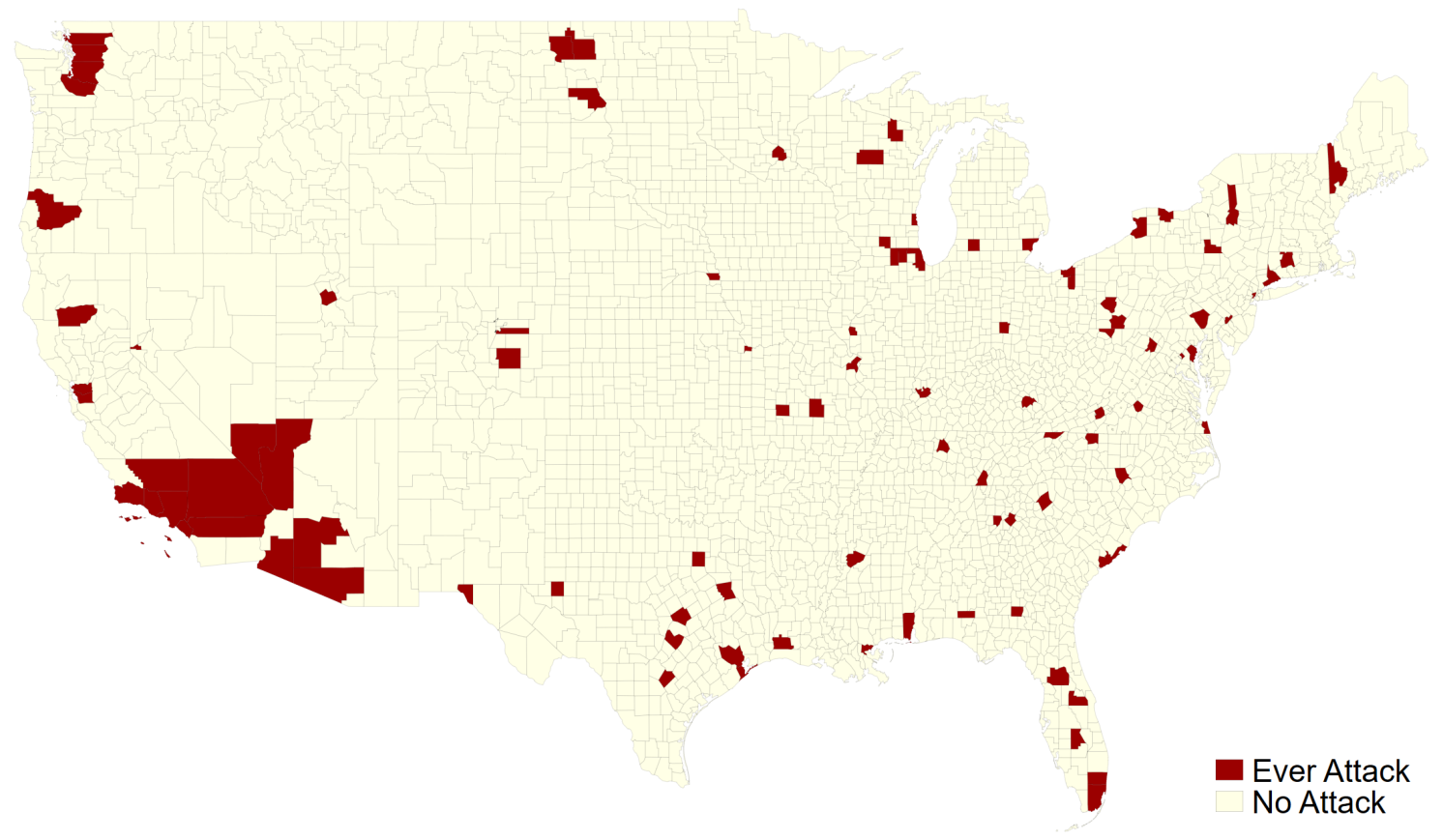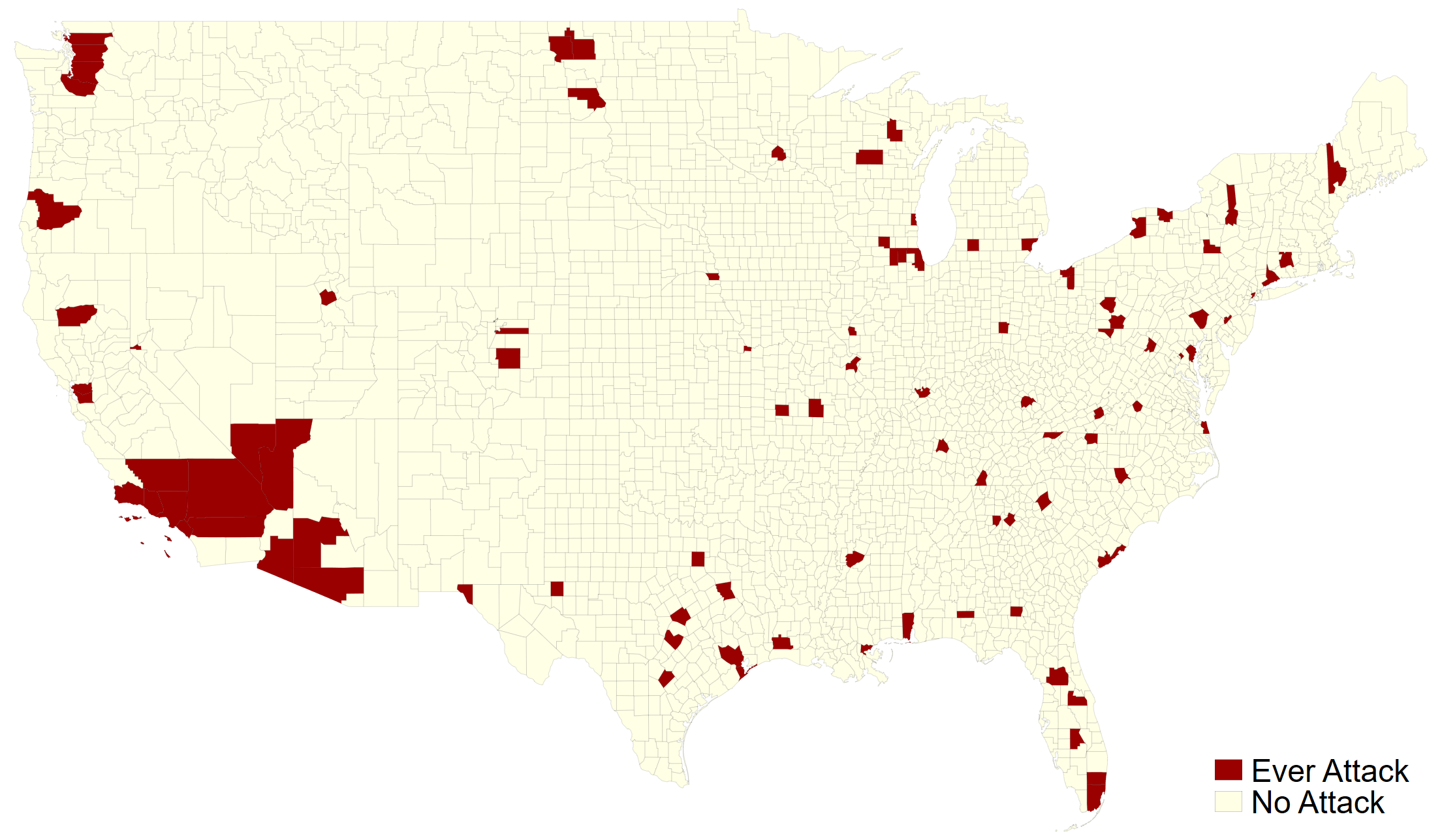The US has seen an alarming rise in the frequency and severity of mass shootings, with a potential indirect impact on pregnant individuals and their infants. This column examines newborn health following the 2002 ‘Beltway sniper’ attacks, which were prolonged and seemingly random attacks that caused intense psychological distress in the area. Exposure to the attacks during pregnancy increased the likelihood of very low birthweight and extreme prematurity. Nationwide data on mass shootings reaffirm these effects, which have high and unaccounted for social costs. In addition to reducing gun violence, mitigating psychological distress during pregnancy could be a potentially cost-effective policy approach.
Firearm violence in the US is a serious public health crisis, characterised by a high incidence of firearm-related homicides and non-fatal injuries. According to the Centers for Disease Control and Prevention, 19,592 people died from firearm homicides in the US in 2022, accounting for 41% of total deaths from firearms, with the rest primarily accounted for by suicides. Furthermore, more than four times as many people sustained non-fatal firearm injuries each year (Kaufman et al. 2021). The firearm homicide rate surged by 35% from 2019 to 2020, reaching its highest level in over 25 years.
One of the most disturbing symptoms of this crisis is the rise in the frequency and severity of indiscriminate shooting incidents in public places, commonly referred to as mass shootings. These incidents not only result in direct harm through loss of life and medical expenses but also have the potential to cause psychological harm, such as post-traumatic stress, fear, and depression, among affected communities (Lowe and Galea 2017, Rossin-Slater et al. 2020, Gershenson and Tekin 2018, Brodeur and Yousaf 2022, Soni and Tekin, forthcoming). Furthermore, media coverage of mass shootings has increased substantially over time, leading to heightened public awareness of these tragic events.
Although mass shootings represent less than 1% of firearm deaths annually in the US, they spark significant public concern and fear and attract substantial policy interest. A recent survey by the American Psychological Association indicates that nearly 80% of adult Americans live with stress due to the possibility of a mass shooting, and about three-quarters report changing their behaviour to avoid becoming a victim. As a result of the staggering human toll, there are persistent calls for lawmakers to take substantive action to help curb this violence.
While there is extensive economic research on the factors contributing to firearm violence and the impacts of policies aimed at addressing it, there is a notable gap in our understanding of the broader consequences of firearm violence, particularly its effects on individuals beyond the immediate victims. This gap is especially evident in research concerning the potential implications of firearm violence for vulnerable populations, such as pregnant individuals and their infants.
In a recent paper (Currie et al. 2023), we examine the impact of stress induced by firearm violence during pregnancy on infant health. This inquiry is of significant importance because health at birth is a major predictor of the future wellbeing of an individual, with poor infant health associated with diminished cognitive development, reduced educational attainment, and lower employment prospects and earnings (Black et al. 2007, Currie and Moretti 2007, Currie 2008, Oreopoulos et al. 2008, Currie et al. 2010, Figlio et al. 2014).
There is a sizeable literature documenting that physical health insults, such as famines (Almond et al. 2010, Scholte et al. 2015), radiation (Black et al. 2019), extreme temperature (Bruckner et al. 2014), malnutrition (Almond and Mazumder 2011), and air pollution (Chay and Greenstone 2003 and 2005, Currie and Walker 2011, Currie and Schwandt 2016) cause poor health among newborn children, which often persists over time. There is also a growing interest in exploring the impact of stress during pregnancy on child outcomes (e.g. Black et al. 2016, Persson and Rossin-Slater 2018, Currie et al. 2022). However, there is limited research that explores the effects of psychological distress, such as stress and trauma resulting from firearm violence, on infant health.
Our paper contributes to the existing literature on the influence of maternal stress during pregnancy on infant health by focusing on psychological stress caused by firearm violence. Arguably, the results from our analysis reflect the effects of stress per se rather as opposed to, for example, impacts of family income or other consequences that could result from a stressful event, or direct personal exposure to hardship or physical violence. Our paper specifically examines the psychological stress stemming from firearm violence. To achieve the goals of our study, we employ two analyses that complement each other with distinct advantages.
The Beltway sniper attacks
The first analysis uses administrative birth records from Virginia and focuses on the 2002 ‘Beltway sniper’ attacks, which occurred in October 2002 in the Washington, DC metropolitan area and Virginia. Two gunmen committed a series of seemingly random shootings over three weeks, resulting in ten deaths and three critical injuries. The attacks triggered the largest manhunt in US history and generated widespread fear and anxiety, as victims were targeted during routine activities, such as mowing the lawn or shopping, without an apparent motive. The unpredictable nature of the shootings led to behavioural changes, with people altering their routines and experiencing heightened stress. Unlike other mass trauma events, these attacks were prolonged, intensifying the psychological distress caused by them.
Our empirical strategy involves comparing the birth outcomes of children in utero during the time and near the locations of the shootings to those of children who were not exposed to the attacks in utero because of timing or because their mothers resided farther from the attacks. A timeline for the shootings along with a description of the victims is displayed in Table 1.
Table 1 Timeline and description of Beltway sniper attacks


Mass shootings in the US
Our second approach broadens the perspective from the Beltway sniper analysis by assessing how in-utero exposure to mass shootings in general affects infant health outcomes, using US Vital Statistics Natality records from 2006 to 2019. We exploit the random occurrence of these incidences across counties and over time using a difference-in-differences design. We expect the effects of mass shootings on birth outcomes to be much smaller than those observed for the Beltway sniper attacks due to the shorter duration of mass shootings and varying impacts within counties. Nonetheless, this analysis helps validate the findings from the Beltway sniper study.
The FBI’s Supplementary Homicide Reports are a key source for national data on mass shootings, but there are limitations due to voluntary participation by law enforcement agencies, resulting in potential data inconsistencies. To ensure accuracy, we verify each incident using additional sources like media reports and government records, correcting discrepancies, and adding incidents not originally in the Supplementary Homicide Reports. We focus on random and unpredictable shooting events, excluding incidents related to gangs and drug activities, to maintain consistency in our definition of mass shootings and their potential to induce stress in uninvolved third parties. Our final dataset includes 113 incidents in 96 counties between 2006 and 2019, as shown in Figure 1.
Figure 1 Counties with a mass shooting, 2006–2019


The effects of exposure to extreme firearm violence during pregnancy on infant health
We find that exposure to the Beltway sniper attacks during pregnancy increased the likelihood of very low birthweight and extreme prematurity by 25%. The most significant effects on birthweight were observed for those exposed during the first and second trimesters, with effect sizes of 40% and 35%, respectively. Similarly, the impact on extreme prematurity was strongest for those exposed in the first six months of pregnancy, particularly in the second trimester, with an effect size of around 30%.
Our analysis of nationwide data on mass shootings reaffirms that severe and random firearm violence imposes substantial burdens on individuals indirectly affected by these incidents, especially infants exposed in utero. Experiencing a mass shooting during the first trimester of pregnancy is associated with a roughly 6% higher likelihood of very low birthweight and an approximately 5% higher likelihood of extreme prematurity when compared to pregnancies not exposed to mass shootings. Although these effects are qualitatively similar, they are smaller in the national analysis due to the shorter duration of mass shootings, a broader geographic scope, and less precise matching of mothers to shootings.
Policy implications
Assessing the social cost of violent crime, particularly firearm-related violence, is critical for policy discussions. Our study highlights the importance of including costs related to the effects on children in utero, which previous estimates overlooked. According to back-of-the-envelope calculations, the Beltway sniper attacks alone resulted in unaccounted social costs of $15.5 billion, while national data on mass shootings suggest annual societal costs of $7 billion due to their impact on infants. The substantial economic burden associated with exposure to gun violence, particularly mass shootings, on pregnant women and their infants highlights the urgent need for interventions aimed at reducing such violence.
Implementing measures to mitigate the psychological distress experienced by pregnant individuals, such as screening for depressive symptoms, represents another simple and potentially cost-effective policy approach. Furthermore, the recent recommendations by the US Preventive Services Task Force to screen pregnant and postpartum adults for anxiety disorders and major depressive disorder align with our study’s findings and could prove instrumental in reducing the toll of gun violence on maternal and infant health.
By addressing the mental health needs of pregnant individuals and acknowledging the broader societal costs, policymakers have an opportunity to not only improve the wellbeing of current and future generations but also alleviate the economic burden associated with firearm violence.
Source: voxeu.org





